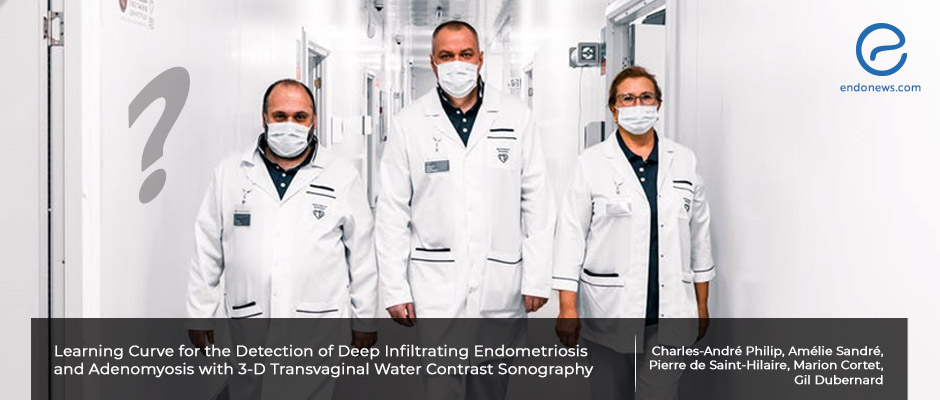Who Is Diagnosing my Endo?
Jul 7, 2022
Doctors can quickly learn the necessary skills to accurately diagnose endometriosis using three-dimensional rectosonography as long as they are trained in an expert center.
Key Points
Highlights:
- Practitioners can learn the skills necessary to accurately diagnose endometriosis and adenomyosis using three-dimensional recto-sonography after a short learning curve at an expert center.
Importance:
- This study highlights the importance of having expert endometriosis centers that can train skilled professionals.
What's done here:
- Researchers conducted a prospective observational study in which they asked 4 doctors doing their residency at a French hospital to diagnose endometriosis and adenomyosis using three-dimensional recto-sonography after a short period of training.
- Their findings were evaluated by an expert sonographer immediately after.
Key results:
- The number of scans that the doctors needed to perform in order to correctly identify different types of endometriosis and adenomyosis varied between 17 and 38.
- The most difficult type of endometriosis to learn how to identify was uterosacral deep endometriosis.
Limitations:
- This was a study conducted in just one center with only 4 doctors.
Lay Summary
It is possible to acquire the skills necessary to diagnose endometriosis lesions as well as adenomyosis using three-dimensional rectosonography after a short learning period in an expert radiology center. This is according to a new study by French researchers published in the scientific journal Ultrasound in Medicine and Biology.
It is difficult to diagnose endometriosis and adenomyosis radiologically as well. In fact, a definitive diagnosis can only be reached following the analysis of excised lesions by histopathological evaluation.
Three-dimensional recto-sonography is a transvaginal sonography technique that uses rectal water contrast and three-dimensional image acquisitions to diagnose endometriosis and adenomyosis. its advantage is that it is easily accessible and clinicians can quickly learn the skills necessary to use it.
In order to assess the learning curve of the technique to diagnose rectosigmoid lesions and deep infiltrating endometriosis in other areas as well as endometriomas and adenomyosis, a team led by Dr. Gil Dubernard from the Obstetrics and Gynecology Department, Croix-Rousse University Hospital of Lyon in France conducted a prospective observational study in April-November 2017. During this period of time, 116 patients were referred to Croix-Rousse with suspicion of pelvic endometriosis. A total of four doctors doing their residency first received a short training period and were then asked to perform three-dimensional rectosonography on their own. One expert sonographer then systematically checked each procedure immediately afterward.
The procedure was deemed successful in case endometriosis and adenomyosis was identified correctly based on the examination of the expert sonographer as the reference technique. Then, the authors used these data to generate a learning curve, which they assessed using the Learning Curve Cumulative Summation Test method.
The results showed that the non-expert doctors were able to correctly diagnose rectosigmoid lesions after they performed 24 rectosonography procedures. They were able to correctly identify vaginal deep endometriosis and endometriomas just after 17 scans and bladder deep endometriosis after 19 scans. To accurately identify torus uterinum deep endometriosis the residents needed to conduct 27 scans and to identify adenomyosis they needed to conduct 33 scans. The most difficult type of deep endometriosis to learn to identify was uterosacral deep endometriosis, which required 38 scans.
“This study provides evidence that the skills required to diagnose endometriosis lesions and adenomyosis with [three-dimensional rectosonography] can be acquired after a brief learning period in an expert center,” the researchers concluded.
Research Source: https://pubmed.ncbi.nlm.nih.gov/35469632/
deep infiltrating endometriosis adenomyosis diagnosis imaging three-dimensional rectosonography doctor training

